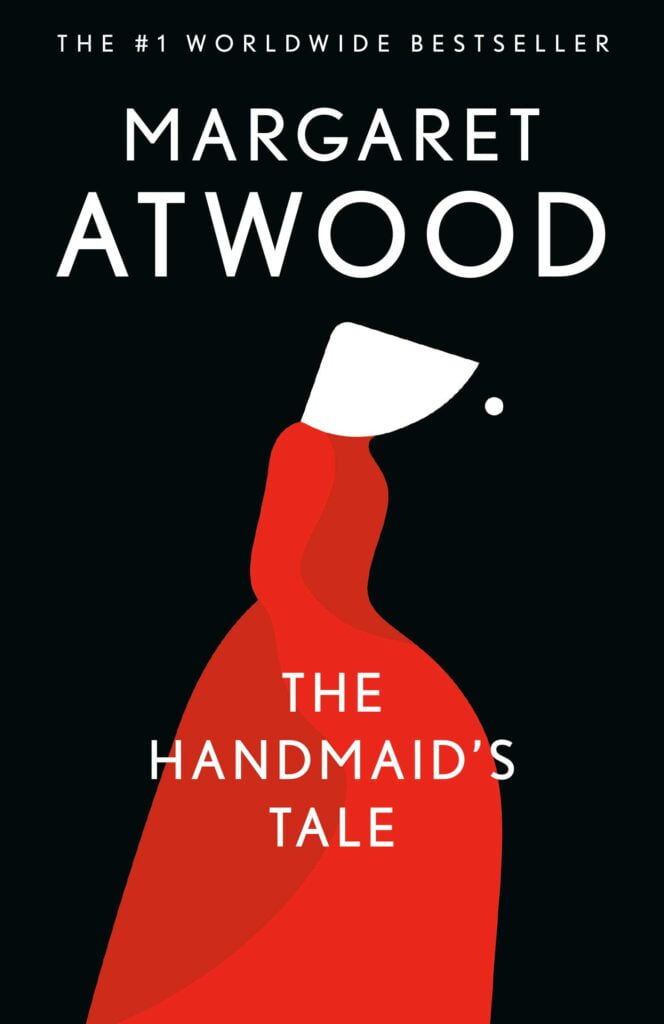
Let’s take a journey today into the dystopian world of one of the most iconic novels I’ve stumbled upon – “The Handmaid’s Tale” by the brilliant Margaret Atwood. I first came across this book in a college literature course. The somber cover and intriguing title pulled me in, and once I dived into the pages, there was no looking back.
Book Summary of The Handmaid’s Tale
“The Handmaid’s Tale” unfolds in the Republic of Gilead, a totalitarian regime that has supplanted the United States of America. Gilead is a place where women’s rights are curtailed, and they are relegated to traditional roles in a rigid caste system. In this new world order, Offred, our heroine, is a Handmaid. Handmaids, dressed in their iconic red robes and white bonnets, are assigned to high-ranking men and their wives, their sole purpose being to bear children in an era of declining birth rates.
Our narrator, Offred, gives us a first-person account of her life under the regime. She tells us about her previous life, her attempts to escape with her husband and daughter, and how she landed in the ‘Rachel and Leah’ re-education center, a.k.a. the Red Center. In the Red Center, women are brainwashed and prepared for their roles as Handmaids. Offred’s life changes when she is assigned to the household of Commander Fred (hence her name, Offred), where she is expected to carry his child.
But life in the Commander’s household is not as straightforward as it seems. Offred begins an illicit relationship with the Commander, who shows her that life in Gilead isn’t as black and white as it’s made out to be. And then there’s Nick, the Commander’s chauffeur, who could be a member of the underground rebellion group, the Mayday. Offred finds herself drawn into a web of danger and deception, all while trying to hold on to her memories of a life that is no more.
Book Review of The Handmaid’s Tale
“The Handmaid’s Tale” is a chilling portrayal of a dystopian future that isn’t too hard to imagine, which is what makes it so terrifying. Margaret Atwood‘s writing is sharp and evocative, painting a picture of Gilead in all its oppressive grimness. Offred’s voice is compelling, and her narrative grips the reader, making one feel the weight of her desperation, loneliness, and the glimmer of rebellion that she clings to.
This novel is a powerful commentary on the subjugation of women, the abuse of power, and the dangers of complacency. Its relevance in today’s socio-political landscape makes it an essential read. It’s a book that makes you think, and more importantly, a book that makes you feel – a hallmark of great literature.
The Handmaid’s Tale Rating
My rating: 9/10. The novel is a superbly crafted piece of literature that leaves a lasting impact. It’s haunting, poignant, and thought-provoking, the kind of book that stays with you long after you’ve put it down.
Amazon rating: 4.3/5
Goodreads rating: 4.13/5
About the Author: Margaret Atwood
Margaret Atwood is a literary giant, a master storyteller who has etched her name in the annals of contemporary literature. Born in Ottawa, Ontario, Atwood spent much of her childhood immersed in nature due to her father’s research in forest entomology.
She was a voracious reader from a young age, diving into everything from literature and fairy tales to comic books. At 16, she realized she wanted to write professionally and later pursued her education at the University of Toronto and Harvard University.
Her personal life saw her married to American writer Jim Polk, and later, novelist Graeme Gibson, with whom she had a daughter. They were together until Gibson’s death in 2019, an event that deeply affected Atwood and influenced her subsequent works.
Atwood’s writing spans across various genres, from poetry and novels to non-fiction and children’s books. Her works explore a plethora of themes, including gender and identity, religion and myth, the power of language, climate change, and “power politics”.
Many of her poems are inspired by myths and fairy tales, her interest in which sparked at a very early age. Atwood is also an inventor, credited for creating the LongPen device that facilitates remote robotic writing of documents.




